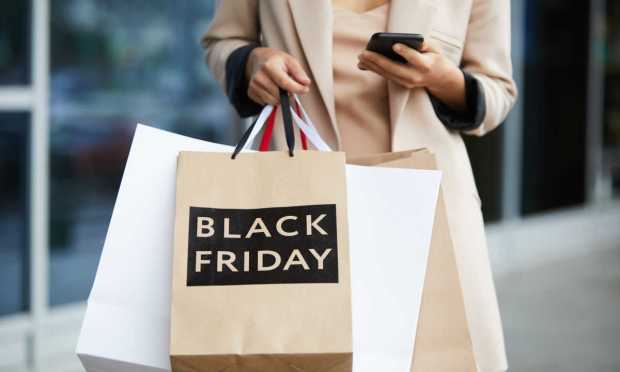History Suggests Black Friday ‘22 Could See Similar Consumer Response Amid Sales Fatigue

The holiday shopping headwinds are completely different this year than last, but PYMNTS research suggests the impact on consumers’ buying habits could mirror those reported in 2021.
This, at a time when the one-day windfall that used to be reserved for “Black Friday” sales the day after Thanksgiving, has been steadily diluted with more sales, in more places, starting earlier and earlier each year in a trend industry observers refer to as “the Christmas Creep.”
While the catalyst to buy early in 2021 was to avoid being left empty handed in the face of supply chain challenges and inventory shortages, the inflation-fueled caution of 2022 has led to overstocked warehouses and rampant discounting with markdowns and promotions everywhere.
The top 5 Black Friday findings PYMNTS revealed last year that look set to repeat this year include an ongoing shift to digital over physical in-store shopping, a strong appetite for delivery and curbside convenience, and a broad lack of urgency in the face of unusually heavy promotional activity.
Facing a landscape that has shifted yet again with inflation replacing COVID infection as the big concern of shoppers, retailers are preempting Black Friday with early sales events that started in October and are continuing up to and through the landmark pre-holiday bargain fest.
“Despite months of news about supply chain problems, inventory shortages, higher prices and the need to shop early or be left behind, 61% of respondents said they did not wake up early to score Black Friday deals out of fear that particular goods and services would be gone,” the November 2021 report found, with the “laid back” response to deals especially notable among older Gen-X consumers and baby boomers.
Deals Everywhere
While seasonal forecasts for this year’s Black Friday, Cyber Monday and full season selling are wide-ranging and cautious, retailers have been clear in their response that there is little to be gained for them by waiting.
Walmart is one of the major early dealmakers as it sticks to the “Black Friday Deals for Days” strategy introduced in 2020, holding three sales events, one on each Monday in November and capping off with a Cyber Monday blowout on Nov. 28.
Adding value for the most loyal Walmart shoppers, Walmart+ members get access to these holiday deals seven hours before the official start time for each of the Monday events.
“Black Friday has evolved over the years from a single day to an entire season and is without a doubt the most anticipated shopping event of the year,” Charles Redfield, executive vice president and chief merchandising officer for Walmart U.S., said in a press release on the plans.
See also: Walmart Joins Other Retailers in Early Holiday Sales
Amazon typically waits until the second week of November to unveil Black Friday-Cyber Monday plans, but if 2021 is any indication, the eCommerce giant may go with a 48-hour sale starting Thursday, Nov. 24, offering early access for Prime members as in the past.
In addition, Amazon’s Prime Early Access event October 11-12 — a double-dip after its July Amazon Prime Day sale — gave a good indication that consumer buying power and confidence is sagging.
See also: Amazon’s Prime Early Access Sale Will Be Retail’s Inflationary Windsock
At the same time, Target’s October announcement of “Weeklong Black Friday Deals” took an even more expansive view.
See also: The Top 5 Things We Learned About the US Shopper From Black Friday
Shoppers Return to Stores
A wildcard in 2022 is the return to physical stores that’s been mounting all year in almost inverse proportion to the lowering of COVID concerns and a general trend of getting out more.
In its pre-holiday outlook, NPD Group said “More ‘early’ pre-Thanksgiving shoppers are starting even earlier — 39% started or plan to have started before October,” adding that “The number of consumers planning to do holiday shopping online fell from 85% last year to 80% this year — the largest shift favoring stores in years.”
At the same time, David Simon, CEO of the country’s largest mall owner, recently told investors that brick-and-mortar stores were rising while its eCommerce portfolio was flatlining.
Big Tech’s Omnichannel Answer
Meanwhile, Big Tech is doing its part to optimize shopping this year with Google rolling out new features to help consumers find deals with “supercharged” visual and voice search integrated with Google Maps and Waze to keep it simple for shoppers.
In a Tuesday (Nov. 1) blog post, Google VP/GM of Consumer Shopping Shashi Thakur noted that “among Americans planning to shop for the holidays, 43% are planning to look for deals and sales more than last year.”
See also: Google Ramps Up Search With New Holiday Deal-Finding Features
For all PYMNTS retail coverage, subscribe to the daily Retail Newsletter.
